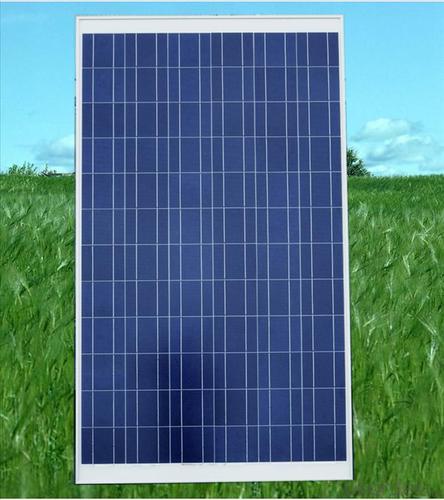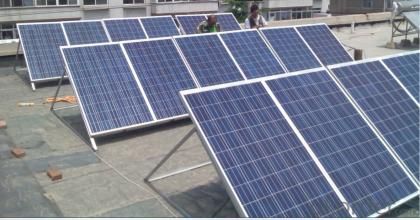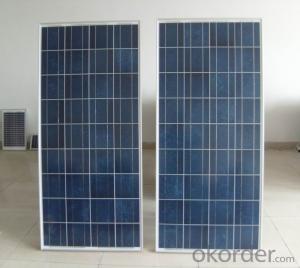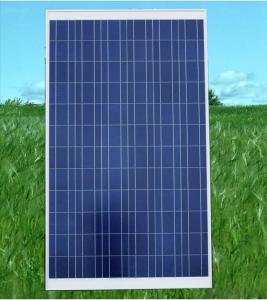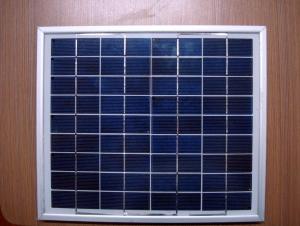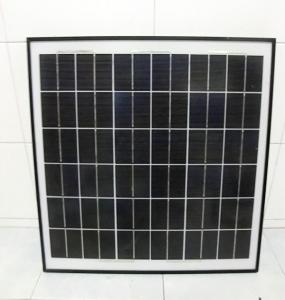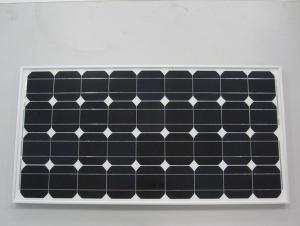CNBM Polycrystalline Solar PV Module 260W
- Loading Port:
- China main port
- Payment Terms:
- TT OR LC
- Min Order Qty:
- 100000 watt
- Supply Capability:
- 10000000 watt/month
OKorder Service Pledge
OKorder Financial Service
You Might Also Like
Specification
About us
CNBM International Corp, established in 2004, is the business entity for trade and logistic of CNBM Group.With the advantages in Cement, Composite Materials, New Building Materials and Engineering, CNBM mainly concentrate on coal, steel and construction equipments and give priority to solar and wind energy development.CNBM International is highly recognized by its business partners and clients all over the world and has established good business relationship with the customers in over 120 countries and regions all over the world.
Polycrystalline Solar PV Module 260W
solar cells: Poly 156*156mm
cells orientation 60(6*10)
Module dimensions 1640*992*40mm
Weight:19.5kg
Quantuty
Quality goal:Constant innovation to meet the request of the customers. Protect the environment, provide environmental products to customer.
Quality strategy:
Quality: established high efficiency quality manager system in line with ISO9001 and ISO/TS16949.
Improvement: keeping improvement & quality guarantee.
Efficiency: delivery on time, complete the agreed events with the customers on time.
Service: focus on customers, provide the service and technology support on time.
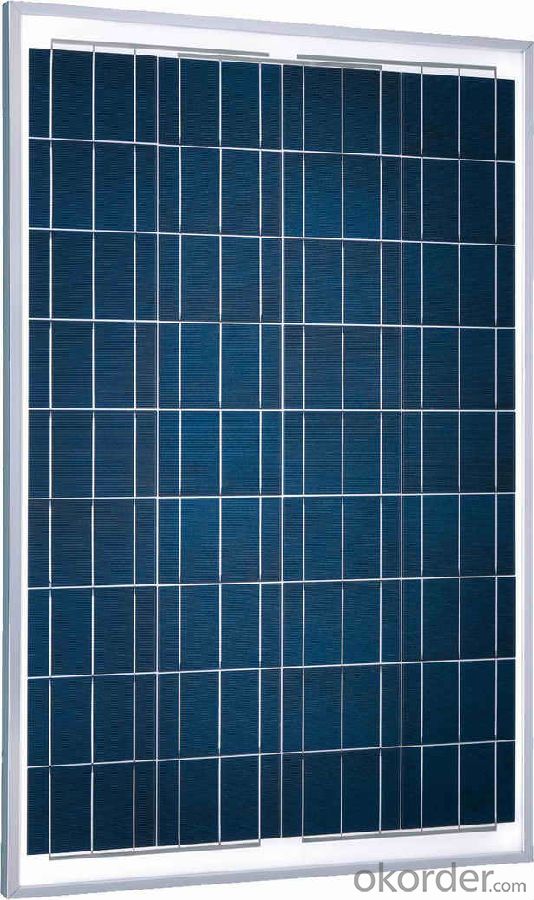
FAQ
1. How long will my inquiry get response?
Your inquiry related to our products or prices will be replied within 24 hours.
2. Can I get professional service and suggestion?
Well-trained and experienced staffs to answer all your questions in fluent English.
3. Do you accept OEM or customized design?
OEM & ODM, any your customized lightings we can help you to design and put into product.
4. What if I need specific design?
Distributorship are offered for your unique design and some our current models.
- Q: Can solar panels be installed on vehicles?
- Yes, solar panels can be installed on vehicles. They are commonly used on electric cars, boats, and recreational vehicles to harness solar energy and help charge their batteries.
- Q: Hello from SO TX.. I would like to know if anyone out there has SOLAR PANELS on their home?I have a 850 sq ft. house. I called Austin to a company that offers panels and installation. The cost $8,000.00, for 0 panels . The rep said we would save about 2 to 25% on our electric bill /mo. We use approximately 980 kw/mo. Our bill is around $40.00 / mo...I really don't think that's a good enough savings. We figure it would take 25 years to recoup our investment.And where we live in TX it does not offer any incentives. The gov. allows you a $2000.00 tx break.
- I'm in the California Foothills and the island of Mindanao... I have both solar panels (electric and water heating) and a single wind-generator since 2000. We actually sell power to PGE in California and are self-sufficient in Mindanao. NOW, I'm confused with YOUR math... you say the Rep. suggests a monthly savings of $35 (25% of $40) which would be $420 / year. If materials / installation are $8,000 less $2000 tax-credit: it would take 35 years to pay off $6,000 at $420 / year. 980 Kwh/ mo is some pretty heavy usage... I'd suggest trying to reduce that. CFT's, lowering your AC setting, no lights if NOT in room, un-plugging stand-by appliances, and upgrading insulation. At our 2000 sq ft California RANCH we only burn 400 Kwh per month, and that includes an 800 sq ft barn (admittedly we heat with a wood-stove). We have 5, Sanyo 200 watt panels (3kw total) and generate an avg 900 kwh / month. SO, we're selling BACK almost 500 kwh mo. to the grid on the photo-cells alone. The kw wind generator averages another 20 kwh / month. I THINK the company YOU are working with is selling the EXCESS electrical-power back to the power-company behind your back !! GOOD LUCK
- Q: I need to find a way to clean solar panels that automated, at best;A way beside using a large 'squeegee'
- Hire Tinkerbell, Disney hasn't had much for her to do lately.
- Q: Hi! I bought a Coleman 2 vdc cooler that pulls 9 amps. What size solar panel and amp-hour battery do I need? I only open it 3 times a day. It will hold about 3 gals of milk.
- If it pulls 9 amps continuously, that's 08 watts/hour or about 2.5 kwh/day. If it only pulls half that (does it cycle?) it's about .2 kwh/day. You only want to drain a lead-acid battery 50% or so, so you'll want a 5 or 2.5 kwh battery pack. A typical setup for the 5 kwh would be two L-6 batteries in series, and for the 2.5 kwh you could use 2 T-05 batteries in series. This does not account for days of cloud. If you regularly have cloudy days, size the battery pack for two or three days of use with no input (2-3 x the sizes given above). To charge them, you typically want panels that will charge your battery at least 5% of its capacity per hour (C/20). For 2 volt nominal panels that's 0 amps for the T-05 or 20 amps for the L-6 batteries. It's good to have more than that for battery life (it cuts down on what's called stratification), so you'll want probably 50-200 watts of panels for the T-05 and 300-400 for the L-6. You'll also need a charge controller. Peltier coolers are very inefficient. You'll save money by using a regular mini-fridge and an inverter. Most mini-fridges only draw 50 watts or so, so you're talking 600 watt-hours for a 50% duty cycle. This means two T-05 batteries will give you two days of use and you'll only need 20-50 watts of panel. DK
- Q: Can solar panels be used on agricultural land?
- Yes, solar panels can be used on agricultural land. In fact, solar installations on farms and agricultural areas have become increasingly popular due to the dual benefits they offer. They not only generate clean energy but also provide farmers with an additional revenue stream. By utilizing solar panels on their land, farmers can offset their energy costs, reduce their carbon footprint, and contribute to a more sustainable future.
- Q: can solar panels be on houses? malls?stores? WHAT ABOUT TRAINS?
- Solar Panels can be used anyway were the panels can get sunlight. Increase efficiency facing north in Australia. You can place them on a roof of a building, caravan, boat, train, bus etc plus you can put them on stands on the ground. Great for camping. You can connect them to the electricity grid or use standalone systems to generate all the power you need. Germany is the leader in solar power usage and Australia gets more sun then they do It makes sense that all Australian households should use solar.
- Q: How do solar panels generate electricity?
- Solar panels generate electricity through the photovoltaic effect. When sunlight hits the solar cells within the panels, the photons from the sunlight excite the electrons in the cells, causing them to move and create an electric current. This current is then captured and converted into usable electricity for various applications.
- Q: Can solar panels be used in areas with high levels of saltwater exposure?
- Yes, solar panels can be used in areas with high levels of saltwater exposure. However, it is important to take certain precautions to prevent corrosion and maximize their performance. This can be achieved by using materials that are resistant to saltwater corrosion, such as stainless steel or aluminum frames, and encapsulating the solar cells with durable and protective coatings. Regular maintenance and cleaning can also help ensure the longevity and efficiency of solar panels in such environments.
- Q: what percentage of sunlight is converted into electrical energy in a solar panel?
- Around 20%
- Q: Can solar panels be used for powering agricultural irrigation systems?
- Yes, solar panels can be used to power agricultural irrigation systems. Solar energy can be harnessed to generate electricity, which can then be used to power pumps and other equipment required for irrigation. This can be a cost-effective and sustainable solution for farmers, especially in areas with abundant sunlight.
Send your message to us
CNBM Polycrystalline Solar PV Module 260W
- Loading Port:
- China main port
- Payment Terms:
- TT OR LC
- Min Order Qty:
- 100000 watt
- Supply Capability:
- 10000000 watt/month
OKorder Service Pledge
OKorder Financial Service
Similar products
Hot products
Hot Searches
Related keywords



